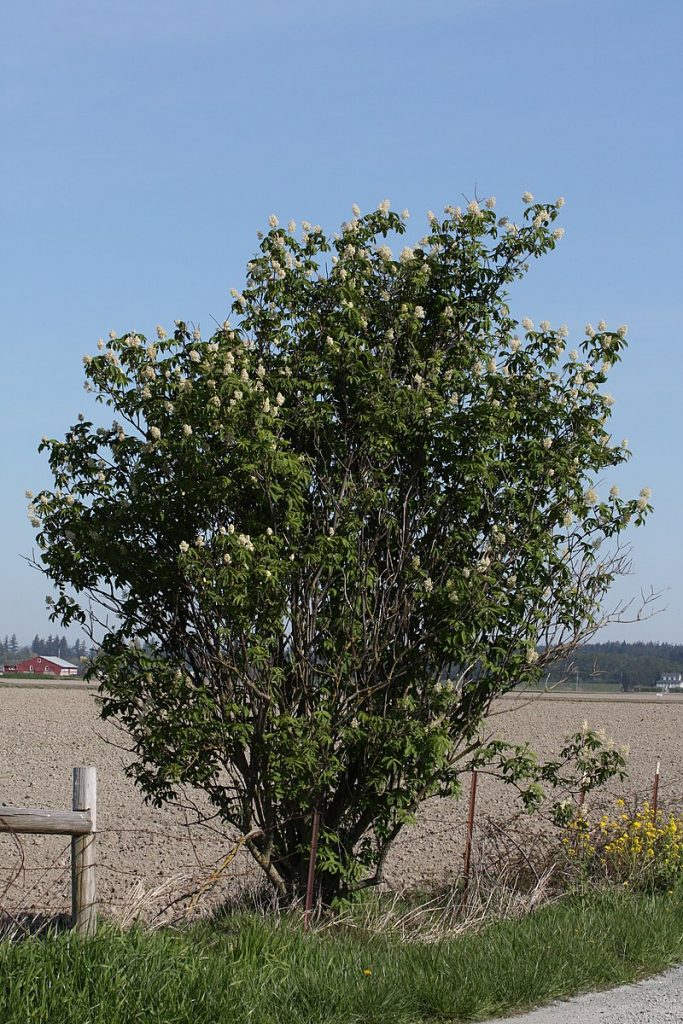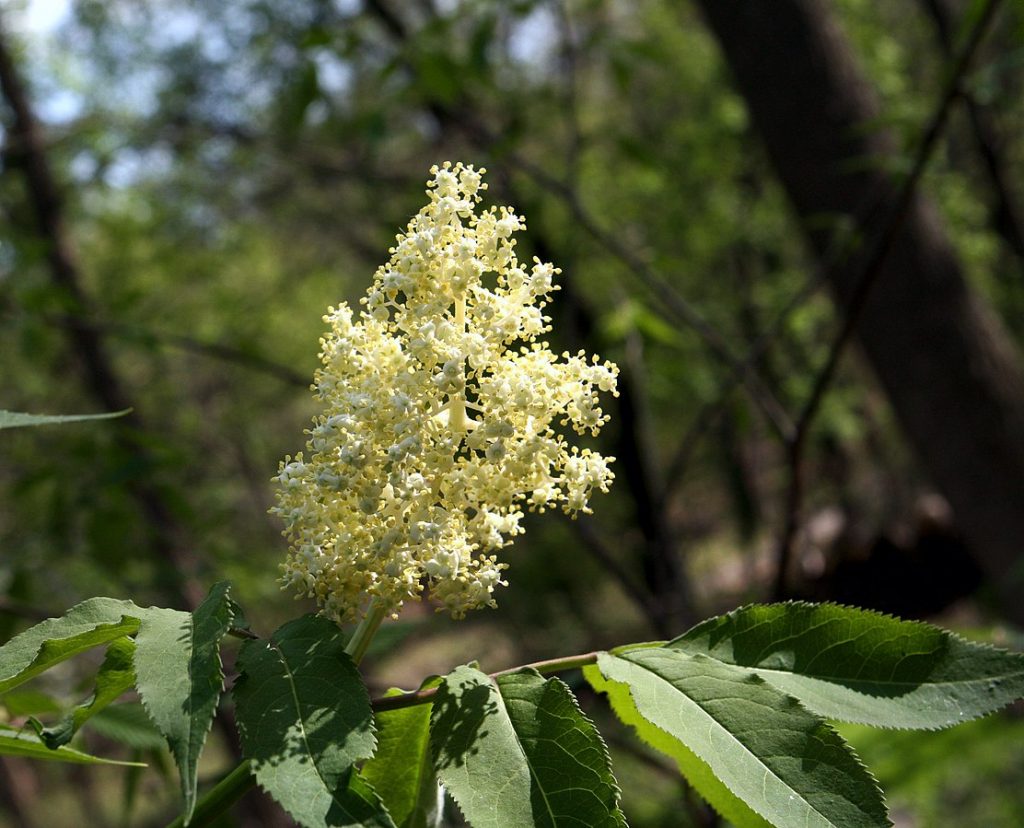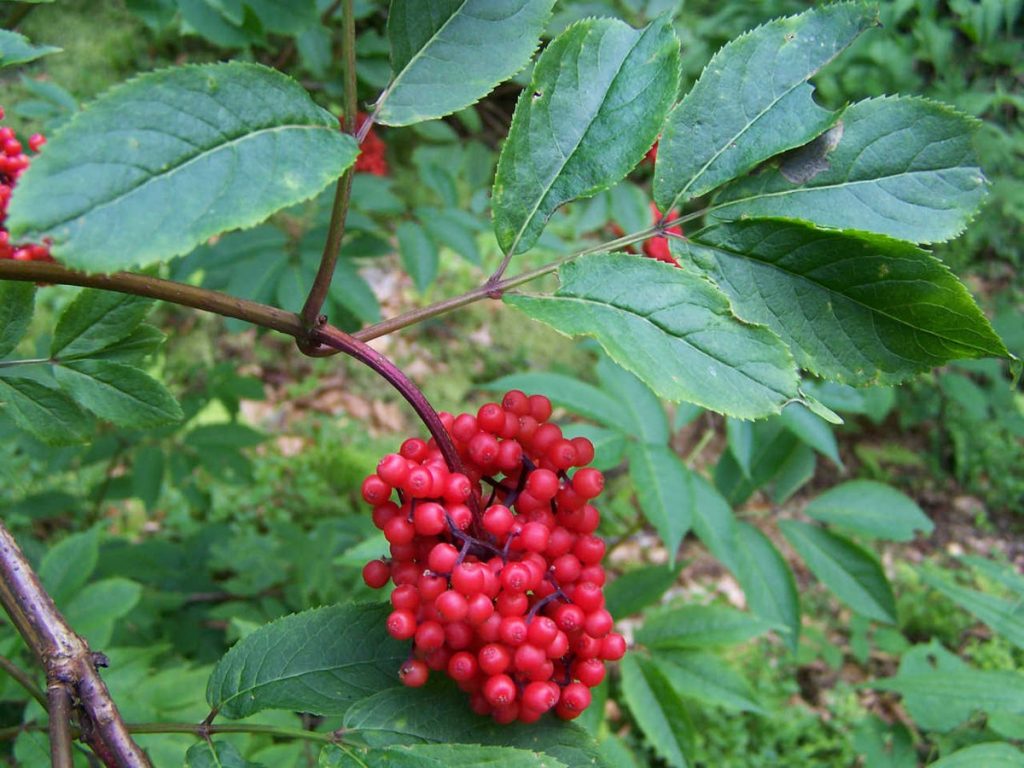
Native to moist habitats of Canada, the US, Europe and northern temperate Asia, this deciduous tree-like shrub is a member of the moschatel family, Adoxaceae, that also includes viburnum. The plant grows 7-25′ tall and has multiple soft stems with a large pithy brown center. The bark is brownish gray with shallow fissures before developing thin plate-like scales with maturity. The pinnately compound leaves are opposite, 6-9″ long, and composed of 5-7 lanceolate to narrowly oval leaflets. The leaflets are up to 4″ long and have serrated margins, darker green topsides, and lighter green, hairy undersides. The leaves give off an unpleasant odor when crushed. The flowers appear in terminal, cone-shaped clusters up to 4′ across from late spring to early summer. The flowers are about ¼ inch across, white, cream or yellowish in color, and have 5 petals that are spreading and recurved to reveal a center of 5 white stamens with yellow anthers. The flowers are fragrant and attract hummingbirds and butterflies. The red to purplish-black fruit is 1/4″ across, berry-like and has 3-5 stone-like seeds. The fruits are tart, attractive to birds and other wildlife, and used by humans, after cooking, to make jellies, pies, and wine. The stems, roots, foliage and berries are poisonous if ingested, but the berries can be consumed after cooking. The genus name, Sambucus, is from the Greek word σαμβύκη (sambúkē) a small triangular musical instrument with four strings and made out of elder. The specific epithet, racemosa, is from the Latin word racemus meaning cluster (especially that of grapes) and refers to the inflorescence. Photo Credit Walter Siegmund Wikipedia

Type: Deciduous flowering shrub
Outstanding Features: Flowers, fruits
Form: Vase-shaped
Growth Rate: Rapid
Bloom: Clusters of tiny white, cream or yellowish, fragrant flowers from late spring to early summer
Size: 7-25′ H’ x 6-25′ W
Light: Full sun to part shade

Soil: Deep, medium moist to wet, well-drained
Hardiness: Zones 3-7
Care: Prune suckers to prevent unwanted spread; can be cut to the ground to rejuvenate
Pests and Diseases: Generally healthy but susceptible to damage by canker, powdery mildew, leaf spot, aphids, borers, and spider mites.
Propagation: Cuttings in fall; seed (more difficult)
Outstanding Selections: None available
Photo Credits:
Top Right: Hardyplants Wikimedia Commons
Bottom right: Opiola Jerzy Wikimedia Commons